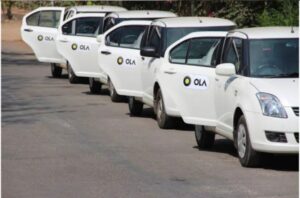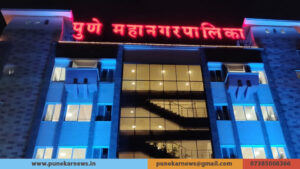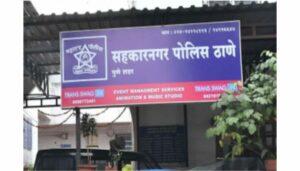Thwarting the Second Wave: Rapid Vaccination should be the primary tool and not lockdown.

Dr. Soumya Kanti Ghosh, Group Chief Economic Adviser, State Bank of India
Vaccine update
- Spanish Flu in 1918 shows more deaths in later waves, thus vaccination is must to avoid larger fatalities later
- Injection to infection ratio shows that India made rapid improvement this year but it is still below Israel, Chile and UK
- Almost 900 million people atleast have received one dose of Covid-19 vaccine world-wide. However, top 15 countries accounted for 84% of total vaccination indicating huge unevenness
- Only 2.6% of population is fully vaccinated in the world, and in India only 1.2% of population is fully vaccinated till now
- Certain States like Rajasthan, Jammu & Kashmir, Haryana, Madhya Pradesh have lower percentage of their population above 45 years and have already given vaccine shots to larger percentage of population above 45 years. However, Tamil Nadu, Punjab, Andhra Pradesh and West Bengal have higher percentage of population above 45 years and have inoculated less proportion of those above 45 years
- Also, the state-wise performance in case of vaccination is quite uneven. Our “Vaccine Hesitancy Index” calculated as doses administered per 100 available shows that all N-E states and in states like Goa, Jharkhand, Assam, Delhi, Uttarakhand, Chhattisgarh there is a vaccine hesitancy
- Serum institute is expected to increase its production capacity to 110 mn doses per month by Jul’21, Bharat Biotech is expected to increase its production capacity to 12 mn doses per month by Jul’21. Also, Sputnik vaccine will be imported from May onwards. Taking these into account we believe a total of 1132 million doses can be given by Dec’21 in which 15% of the population can be fully vaccinated and 84% can get their first shot
- Experience of other countries show infections stabilize after 15% of population receive second dose
- Now that states are free to buy vaccine from manufacturers from 1 May, our estimate for 13 states shows that the cost of vaccine to inoculate is almost 15-20% of states’ health expenditure budget (assuming half of the population in these states will get vaccinated by Central Government), still it will be only 0.1% of GDP. This is significantly lower than the economic loss in GDP due to lockdown which is already at 0.7% of GDP
Impact on GDP
- Given the current circumstances of partial/local/weekend lockdowns in almost all states, SBI growth forecast is revised downwards. Revised SBI FY22 projection now at 10.4% real GDP and 14.3% nominal GDP
COVID update
- Recovery rate across countries continues to improve in different peaks. But in India recovery rate increased to 97.3 till mid-Feb’21 but it has started declining thereafter and moved to 85 recently. Based on our model if we consider second wave peak is reached when recovery rate is around 78%-79%, then the peak could be further away in May
- Our model suggests that the estimated peak time is 96 days from 15-Feb, indicating the peak happening in the 3rd week of May. It may ne noted that we are incrementally adding around 15000 more cases over peak of previous day as of today, though such numbers are difficult to predict
- UP and Maharashtra achieved peak before national peak in first wave. Now new cases in Maharashtra seems to be stabilising but share of cases in total of various other states (Chhattisgarh, MP, Gujarat) has increased in the current second wave and these are showing increase in daily new cases. So, if other states also implement strict actions and control the spread, then national peak may come within 2 weeks after Maharashtra peak
- Our statistical model indicates that India did remarkably well in containing COVID first wave, but as like in most other countries that faced unprecedented 2nd waves might have managed the 2nd wave better. States Contribution to the India’s Estimated surge (as per our model) 31 Lakh cases after Jan’21, Maharashtra alone contributed 52% and 5 states contributed 75%
- 7-days moving average of fatality rate in the current second wave is higher than fatality rate at the time of first wave peak in case of Chhattisgarh, HP, Uttarakhand and Odisha
- In the current second wave, Maharashtra, Goa, Chhattisgarh, Delhi, Haryana are simultaneously having test positivity and high number of infections
- In the current second wave, Mobility & Cases both increased in UP & Karnataka in April, but conversely Mobility declined & and Cases increased in Chhattisgarh, Delhi and Maharashtra
District wise
- Share of top 15 districts in new cases have declined; but rural penetration has increased. Amongst the top 15 districts worst affected (mostly urban and only 2 are rural), 6 are from Maharashtra. Overall, these districts contribute around 25% to the National GDP. If we look at the rural districts worst affected, 9 are from Maharashtra followed by 3 from Chhattisgarh. These account for around 3.3% of the National GDP
- Also, if we see various districts where congregation was held (Kumbh, Election bound states and farmer protests) recently, have seen uptick in daily new cases in April, though of smaller magnitude
Economic Indicators
- SBI business activity index shows decline in activity in Apr’21 with the latest reading for the week ended 19 Apr’21 of 86.3. This is the lowest in 5 months (16 Nov’21 when the value declined to 85.7). All the indicators have shown a dip with maximum decline in Apple mobility, weekly food arrival at Mandis and RTO revenue collection
- ASCBs credit has declined to a 59-year low of 5.6% in 2020-21, compared to 6.1% growth in 2019-20. On the other hand, deposits have increased to 11.4% in FY21, compared to 7.9% growth in FY20
- In FY21 Apr-May, huge monthly incremental increase in deposits was observed (particularly time deposits) as people had less options to spend due to nation-wide lockdown. This time also we expect large traction in time deposits as most of the states imposed partial lockdowns
- Meanwhile, early trend of around 45 listed entities suggests 10% growth in top line for listed entities while EBIDTA and PAT too grew by 16% and 26% in Q4FY21 as compared to Q4FY20. Entities with turnover of less than Rs 100 crore reported 6% growth in net sales and negative PAT despite cut in employee expenses by 10%
- In Commercial Paper market yield continue to be below 4% and decreased to 3.71% in Apr’21 against 4.35% in Mar21
Oxygen update
- All states should allow ambulance status to tankers so that they move faster, which will certainly help and reduce the transit time
- Government of India should analyse the oxygen data on a daily basis and direct supply. This is purely a supply chain optimization problem








